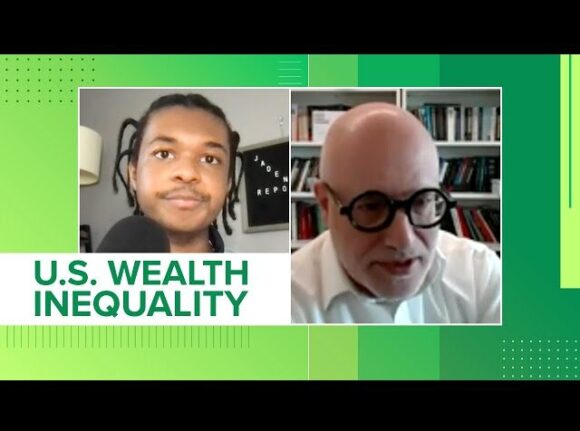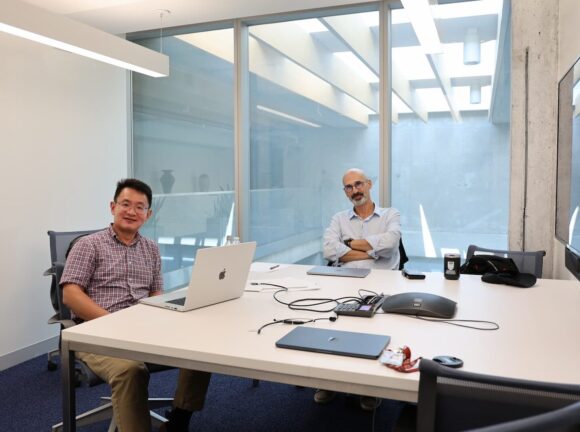
Steven Durlauf
Director, Stone Center for Research on Wealth Inequality and Mobility
Frank P. Hixon Distinguished Service Professor at the Harris School of Public Policy, University of Chicago
Biography
Steven N. Durlauf is a leading scholar in inequality research. He is the founding Director of the University of Chicago’s Stone Center for Research on Wealth Inequality and Mobility. He is known for integrating sociological ideas into economic theories of inequality, poverty, and intergenerational mobility as well as for research that elucidates how statistical analysis can reveal the mechanisms underlying various dimensions of inequality.
Research
An enduring feature of American society is that the neighborhood where children grow up and the associated schools where they learn play a significant role in determining their later-life socioeconomic status. What explains this phenomenon? What are the appropriate tools for measuring neighborhood effects? What are its implications for social mobility across generations? My theoretical research has developed theories to explain inequalities across neighborhoods and methodologies for measuring their effects on children and social mobility. My theoretical work demonstrates that higher-income parents are incentivized to segregate into neighborhoods with better-funded schools and resources as well as fewer social problems such as exposure to violence, leading to disparities in child outcomes. I have also found that neighborhood segregation can persist for the foreseeable future without policy interventions and that this inequality can diminish social mobility across generations in the United States. As such, this work provides a different perspective on intergenerational mobility, one in which social mechanisms represent a fundamental mechanism for determining the extent to which parental socioeconomic status is transmitted to children.
My methodological work has also explored a range of statistical questions concerning inequality and mobility. One direction has involved developing conditions under which different social determinants of inequality may be identified from one another and from individual determinants such as the family. Recently, my work has emphasized how traditional measures of intergenerational mobility–often studied by policymakers–may be inadequate in representing poverty traps and persistent inequality between social groups. For instance, in a recent paper (2024), my co-authors and I proposed new methods for characterizing the process of occupational mobility using Markov chains. These methods allow us to measure the persistence of racial inequality (the ‘memory’ of the system), separate mobility into its structural and exchange components, and identify which periods of time had the greatest impact in changing mobility dynamics for black and white people. We found that the improvement in mobility experienced by black men in the 1940-50 birth cohort–those who came of age during the civil rights era–was unique in narrowing the racial gap and shaping contemporary mobility dynamics.

inequality (measured by a country’s Gini coefficient) and persistence (measured by the
intergenerational elasticity of income).
Selected Publications
- Durlauf, Steven N. 1996. “A Theory of Persistent Income Inequality.” Journal of Economic Growth 4: 75-93. doi:10.1007/BF00163343
- Durlauf, Steven. N. 2004. “Neighborhood Effects”. Handbook of Regional and Urban Economics, 4: 2173-2242. doi:10.1016/S1574-0080(04)80007-5
- Durlauf, Steven N., Andros Kourtellos, and Chih Ming Tan. 2022. “The Great Gatsby Curve.” Annual Review of Economics 14: 571-605. doi:10.1146/annurev-economics-082321-122703
- Cholli, Neil A. and Steven N. Durlauf. 2022. “Intergenerational Mobility.” (No. w29760). National Bureau of Economic Research. doi:10.3386/w29760
- Durlauf, Steven N. and Ananth Seshadri. 2018. “Understanding the Great Gatsby Curve.” NBER Macroeconomics Annual 32(1): 333-393. doi:10.1086/696058
- Durlauf, Steven N., Gueyon Kim, Dohyeon Lee, and Xi Song. 2024. “The Evolution of Black-White Differences in Occupational Mobility Across Post-Civil War America.” (No. w32379). National Bureau of Economic Research. doi:10.3386/w32370
Both economists and policymakers acknowledge that the rate of economic growth is the most common measure for evaluating economic success (or failure) in a geographic area. My work on growth emphasizes substantial limitations of the existing literature. One broader claim is that there exists a significant mismatch between theoretical and empirical growth studies. Developing relevant econometrics methods and tools could be the key remedy for effectively linking existing growth theories to data analysis and hypothesis testing. My research has contributed to cross-country comparative analysis methodology by studying the role of potential nonlinearities and heterogeneity in growth processes in different places, as well as emphasizing the benefits of considering several alternative growth theories together by applying a model averaging methods rather than following a single theoretical framework (which is always difficult to prove to be uniquely accurate). My research also highlights the importance of institutions and culture in studying economic growth and formulating appropriate policy conclusions and recommendations.
Selected Publications
- Durlauf, Steven N. 2020. “Institutions, Development, and Growth: Where Does the Evidence Stand?” The Handbook of Economic Development and Institutions, F. Bourguignon, J.-P. Platteau, eds. Princeton: Princeton University Press. doi:10.1515/9780691192017-008
- Durlauf, Steven N. 2001. “Manifesto for a Growth Econometrics.” Journal of Econometrics 100(1): 65-69. doi:10.1016/S0304-4076(00)00055-5
- Durlauf, Steven N., Andros Kourtellos, and Chih Ming Tan. 2008. “Are Any Growth Theories Robust?” The Economic Journal 118(527): 329-346. doi:10.1111/j.1468-0297.2007.02123.x
- Durlauf, Steven N., Andros Kourtellos, and Artur Minkin. 2001. “The Local Solow Growth Model.” European Economic Review 45: 928-940. doi:10.1016/S0014-2921(01)00120-9
Oftentimes economists prescribe particular policies after taking a stance on their model for attaining a measurement of interest. As a result, different economists may arrive at conflicting conclusions, creating confusion for policymakers who ultimately need to make a decision. Respecting that the ‘true’ model is often unknown, I have developed methodologies that appropriately aggregate information across various plausible models to arrive at a far more robust policy position. I have applied this methodology in various contexts, including monetary policy and criminal justice. For example, my analysis finds that the deterrent effect of capital punishment on murders may be much weaker than some studies suggest.

of capital punishment, as estimated by several thousand model specifications. The spread of
the results reflects the uncertainty regarding the measurement of the relationship between
capital punishment and the murder rate.
Selected Publications
- Brock, William A., Steven N. Durlauf, Kenneth D. West. 2007. “Model Uncertainty and Policy Evaluation: Some Theory and Empirics.” Journal of Econometrics 136(2): 629-644. doi:10.1016/j.jeconom.2005.11.009
- Cohen-Cole, Ethan, Steven N. Durlauf, Jeffrey Fagan, and Daniel Nagin. 2009. “Model Uncertainty and the Effect on Capital Punishment.” American Law and Economics Review 11(2): 335-369. doi:10.1093/aler/ahn001
- Durlauf, Steven N., Salvador Navarro, and David A. Rivers. 2016. “Model Uncertainty and the Effect of Shall-Issue Right-to-Carry Laws on Crime.” European Economic Review 81: 32-67. doi:10.1016/j.euroecorev.2015.07.020
Human capital development has long been understood by scholars to be among the key factors contributing to economic growth. My work has enriched existing literature on this topic. One policy-relevant example of my research is a study comparing meritocratic and affirmative action admission policies to public universities. My main results suggest that (a) meritocratic admissions are not necessarily efficient and (b) affirmative action policies may be efficiency enhancing relative to meritocratic ones. I conclude that a presumption for equality-enhancing policies leads to support for affirmative action
In another recent paper (2023), my co-authors and I investigated how parental income trajectories during childhood and adolescence predict children’s permanent incomes, proposing a novel methodological approach that employs methods from Functional Data Analysis. Using panel data from the United States, we found that parental incomes in middle childhood and adolescence have more significant marginal effects on children’s outcomes than do incomes in early childhood. Our model also suggests that children of parents with increasing income trajectories have higher expected permanent incomes. These findings suggest that it is important to understand how parental incomes impact children differently across their life courses, and allow us to revisit existing work regarding the effectiveness of targeting policy interventions in childhood and adolescence.

adolescence. The monotonicity of the curve suggests that a) parental outcomes have stronger
marginal effects on predictive income in late childhood and adolescence compared to early
childhood and b) for families with equal permanent incomes, children whose parents experience
increasing income trajectories will have higher permanent incomes than children whose parents
experience stable or decreasing income trajectories.
Selected Publications
- Chang, Yoosoon, Steven N. Durlauf, Seunghee Lee, and Joon Y. Park. 2023. “A Trajectories- Based Approach to Measuring Intergenerational Mobility.” (No. w31020). National Bureau of Economic Research. doi:10.3386/w31020
- Durlauf, Steven N. 2008. “Affirmative Action, Meritocracy, and Efficiency.” Politics, Philosophy & Economics 7(2): 131-158. doi:10.1177/1470594X08088726
- Brock, William, Bo Chen, Steven N. Durlauf, and Shlomo Weber. 2022. “Everybody’s Talkin’ at Me: Levels of Majority Language Acquisition by Minority Language Speakers.” (No. w30410). National Bureau of Economic Research. doi:10.3386/w30410


